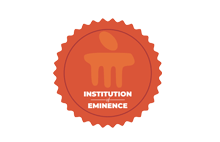Cytotoxicity of Silorane and Methacrylate based Dental Composites on Human Pulp Cells
Document Type
Article
Publication Title
Journal of Orofacial Sciences
Abstract
Introduction: The ingredients from the dental restoratives are known to leach and elicit a host response. The prerequisite to deem a material biocompatible requires its toxicologic evaluation. The study was performed to analyze the probable toxicity resulting from silorane-based composite (SBC) with methacrylate-based composite (MBC). Materials and Methods: The in vitro cytotoxicity test, methyl thiazolyl tetrazolium (MTT) assay, evaluated the cell viability and proliferation rate of dental pulp cells (DPCs). The extirpated pulp was cultured in α-MEM-containing supplements and incubated at 37°C. DPCs were subjected to varying doses of SBC or MBC at different time intervals after attaining confluence and monitored for proliferation and viability via MTT assay. An independent Student t test was performed to compare the effect of composites on the DPC. The cytotoxicity levels were compared using one-way analysis of variance and posthoc Tukey multiple comparison test at 5% level of significance and P-value of <0.05. Results: DPC exposed to MBC showed higher viability than SBC. The MTT assay reported the number of viable cells as (>90%) in the first 24 hours. The count significantly reduced by the end of 48 hours (minimum 65% in 25 μg/ml) at all concentrations (P < 0.05). SBC had lower survival than MBC in all concentrations and periods. Except at 5 μg/ml concentration at 48 hours in SBC, no statistically significant values were reported. Conclusion: DPCs are prone to the cytotoxicity caused by dental composite. In contrast to MBC, the cytotoxicity of SBC declines overtime.
First Page
13
Last Page
18
DOI
10.4103/jofs.jofs_312_20
Publication Date
1-1-2021
Recommended Citation
Madhyastha, Prashanthi; Bhat, Kumar; Padma, Divya; and Bangera, Madhu, "Cytotoxicity of Silorane and Methacrylate based Dental Composites on Human Pulp Cells" (2021). Open Access archive. 3303.
https://impressions.manipal.edu/open-access-archive/3303


